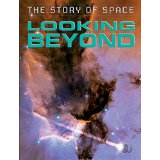2018 School Spending Survey Report
Looking Beyond
9781625880765.
ea vol: illus. by David West. 32p. (Story of Space). glossary. index. photos. Smart Apple Media. 2015. lib. ed. $31.35.
COPY ISBN
VERDICT Solid options to round out materials on space.
RELATED
ALREADY A SUBSCRIBER? LOG IN
We are currently offering this content for free. Sign up now to activate your personal profile, where you can save articles for future viewing





Be the first reader to comment.
Comment Policy:
Comment should not be empty !!!